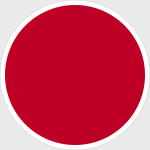Hobby Master HA2713B Japanese Air Self-Defense Force Mitsubishi F-2A Multirole Fighter - 13-8557, 8th Tactical Fighter Squadron, 8th Air Wing, Tsuiki Air Base, Japan (1:72 Scale)
"Obsolete weapons do not deter."
- British Prime Minister Margaret Thatcher
 The Mitsubishi F-2 is a multirole fighter derived from the General Dynamics F-16 Fighting Falcon, and manufactured by Mitsubishi Heavy Industries and Lockheed Martin for the Japan Air Self-Defense Force, with a 60/40 split in manufacturing between Japan and the United States. Production started in 1996 and the first aircraft entered service in 2000. The first 76 aircraft entered service by 2008, with a total of 98 airframes produced. The first active electronically scanned array (AESA) radar on a combat aircraft was the J/APG-1 introduced on the Mitsubishi F-2 in 1995. The F-2 is nicknamed "Viper Zero", a reference to the F-16's semi-official nickname of "Viper" and the Mitsubishi A6M Zero.
The Mitsubishi F-2 is a multirole fighter derived from the General Dynamics F-16 Fighting Falcon, and manufactured by Mitsubishi Heavy Industries and Lockheed Martin for the Japan Air Self-Defense Force, with a 60/40 split in manufacturing between Japan and the United States. Production started in 1996 and the first aircraft entered service in 2000. The first 76 aircraft entered service by 2008, with a total of 98 airframes produced. The first active electronically scanned array (AESA) radar on a combat aircraft was the J/APG-1 introduced on the Mitsubishi F-2 in 1995. The F-2 is nicknamed "Viper Zero", a reference to the F-16's semi-official nickname of "Viper" and the Mitsubishi A6M Zero.
General Electric, Kawasaki, Honeywell, Raytheon, NEC, Hazeltine, and Kokusai Electric were among the primary component sub-contractors. Lockheed Martin supplied the aft fuselage, leading-edge slats, stores management system, a large portion of wingboxes (as part of two-way technology transfer agreements), and other components. Kawasaki built the midsection of the fuselage, as well as the doors to the main wheel and the engine, while the forward fuselage and wings were built by Mitsubishi. Avionics were supplied by Lockheed Martin, and the digital fly-by-wire system was jointly developed by Japan Aviation Electric and Honeywell (formerly Allied Signal). Contractors for communication systems and IFF interrogators included: Raytheon, NEC, Hazeltine, and Kokusai Electric. Final assembly was done in Japan, by MHI at its Komaki-South facility in Nagoya.
Larger wings give an aircraft better payload and maneuverability in proportion to its thrust, but also tend to add weight to the airframe in various ways. More weight can have negative effects on acceleration, climbing, payload, and range. To make the larger wings lighter the skin, spars, ribs and cap of the wings were made from graphite-epoxy composite and co-cured in an autoclave. This was the first application of co-cured technology to a production tactical fighter. This technology for the wings encountered some teething problems, but proved to be a leading-edge use of a technology that provides weight savings, improved range, and some stealth benefits. This technology was then transferred back to America, as part of the program's industrial partnership.
The F-2 has three display screens, including a liquid crystal display from Yokogawa.
Pictured here is a 1:72 scale replica of a Japanese Air Self Defense Force Mitsubishi F-2A multirole fighter that was attached to the 8th Tactical Fighter Squadron, 8th Air Wing, then deployed to Tsuiki Air Base, Japan.
Sold Out!
Dimensions:
Wingspan: 7-inches
Length: 8-inches
Release Date: March 2022
Historical Account: "Tsuiki" - Tsuiki Air Field is a military aerodrome of the Japan Air Self-Defense Force Tsuiki Airbase. It is located in Tsuiki, Fukuoka Prefecture, Japan.
Tsuiki Airfield was originally built by the Imperial Japanese Army Air Force during World War II. The airfield was attacked by USAAF Fifth Air Force B-24 Liberator and A-26 Invader bombers on August 7th, 1945, largely destroying the base and incapacitating the airfield for operational use.
Not rebuilt in the immediate postwar era, the old IJAAF airfield was pressed into use during the early days of the Korean War, when the United States Air Force 8th Fighter Group moved F-51 Mustangs to Tsuiki in mid-August 1950 for operations over the South Korean Pusan Perimeter. When airfields became available in South Korea, the unit moved to Suwon AB (K-13) to conduct ground support operations.
In addition, the 35th Fighter Group, one of the first USAF units deployed to South Korea, pulled out of the line for F-51 replacement aircraft and personnel R&R at Tsuiki in mid-August. In October, it returned to the South Korean battlefield, moving with the 8th FG to Suwon AB.
After its reactivation, Tsuiki Air Base became a second-line USAF facility for the remainder of the Korean War, hosting several weather squadrons, with the 6169th Air Base Squadron being the main host support unit, and supervising construction of new runways and support buildings. After the combat in Korea ended in 1953, it remained a reserve base until being returned to Japanese control in June 1957.


